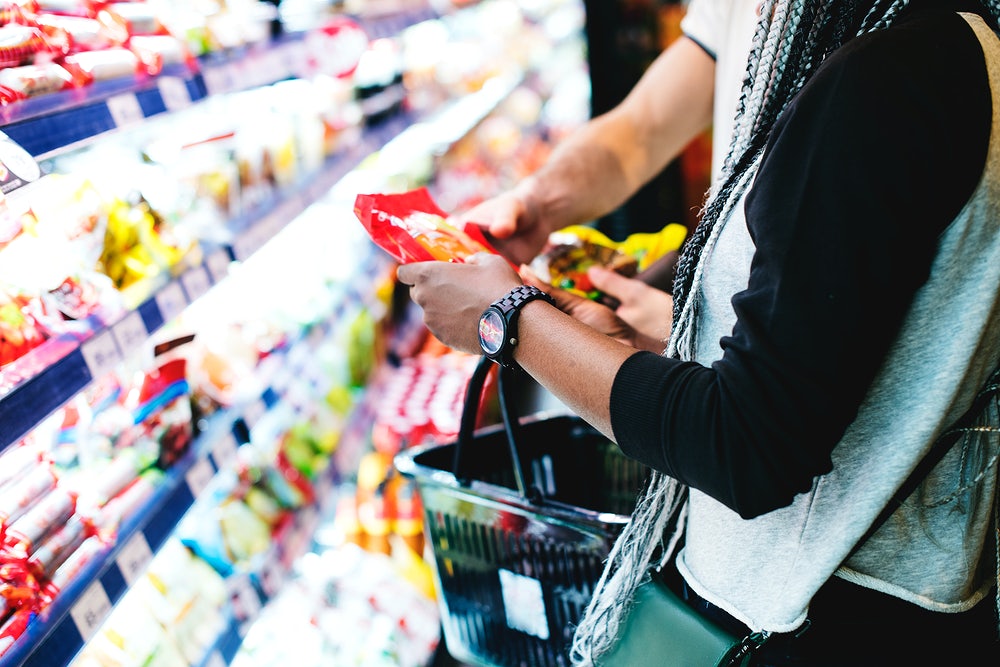
Grocery Store Tricks
No matter how much you love Trader Joe’s, don’t forget your favorite destination for organic Cheetos is still a business at the end of the day. As we all try to navigate this complicated lifestyle of health and wellness, it’s important to recognize that even the grocery store is organized to influence your mindset and buying decisions.
Many of our favorite groceries share similar floor plans and shelf-layouts to create a sense of security and familiarity with you as the shopper. We are typically funneled through a one-way entrance that flows in a counter-clockwise direction to guide right-handed shoppers. Through that flow path, we’re often met with bright colors and fresh smells that stimulate hunger, cravings, and emotional response to spontaneous purchases.
Groceries also utilize many different methods to highlight products with shelf placement. Branded, best-selling and more expensive products are typically found at eye level. On the other hand the cheaper and generic products are hidden on more inconspicuous shelf levels.
Handwritten signs and “left-digit” labeling tactics (like marking a product as ($9.99 versus $10.00) are a few ways that groceries can get you roped into spending more. Always be sure to compare the price per unit (usually found on the shelf sticker) and ingredient labels before filling up your cart and thinking you scored a bargain.
Also, be mindful of the narrow check-out lanes that are lined with overpriced treats in single-serving sizes. The smaller size candy bars make you feel less guilty and more impulsive about the quick purchase.
Here are a few things to focus on during your next visit to the grocery:
- Don’t shop when you’re hungry — hunger will affect your decision-making process when it comes to food; you’ll be much more likely to leave with a few extra goodies
- Have a plan — come into the store with a grocery list and stick to it
- Look above and below before swiping anything from the shelves
- Search for the generic alternative to a brand-name product; compare both the price per unit and ingredient list before spending extra money; stores like Walmart and Kroger often produce cheaper in-house versions of the same food
- Shop on the edges; most of the fresh, healthy, and unprocessed food is located on the outer ring of the grocery store
- Use the express checkout lanes to avoid temptation in the isles
Happy shopping!



